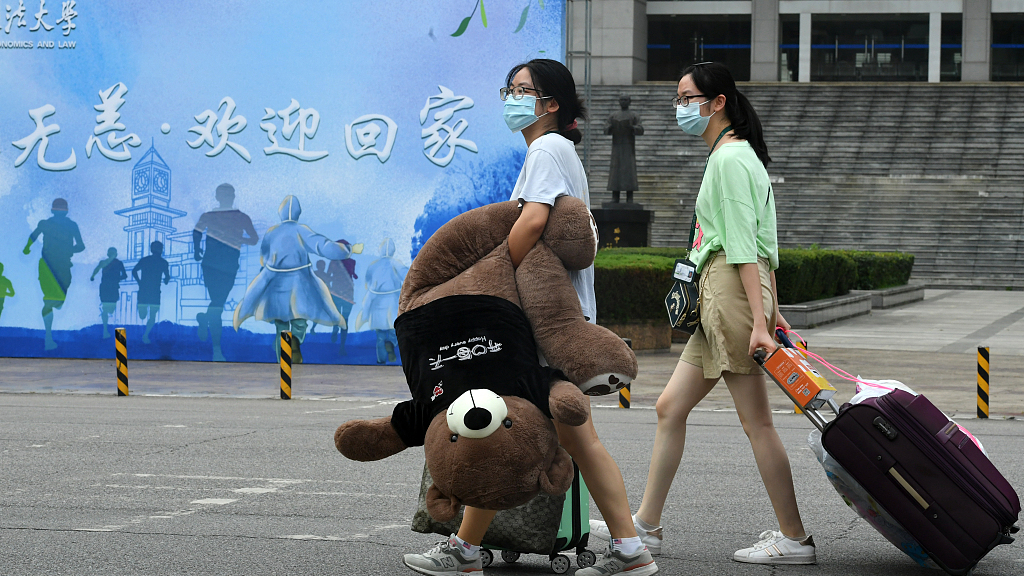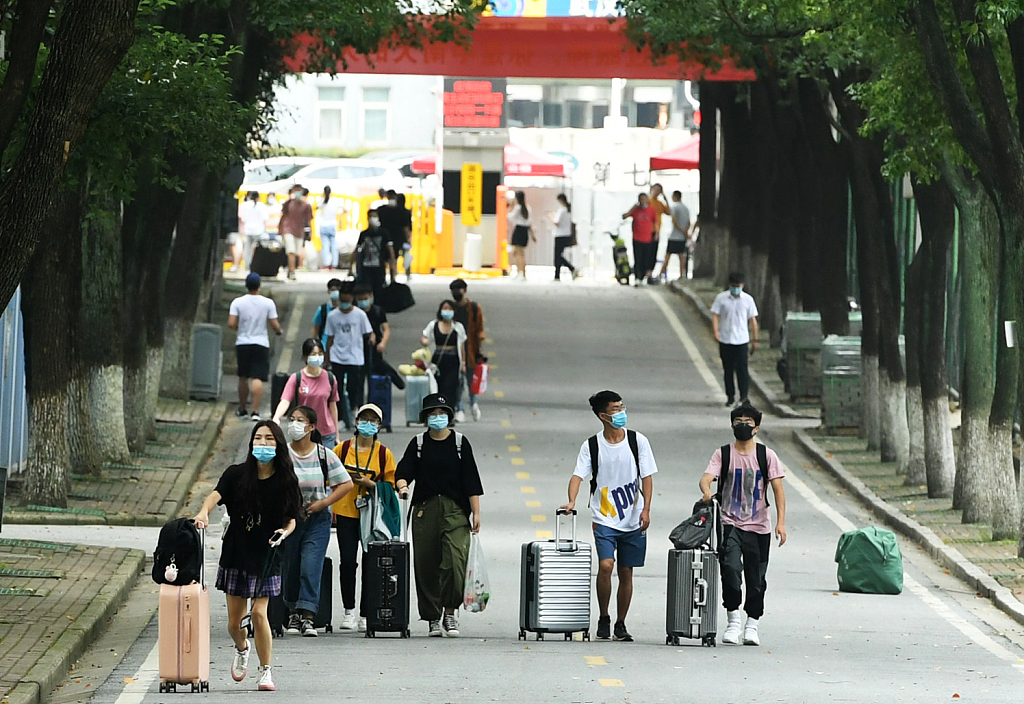
Students return to the campus of Zhongnan University of Economics and Law in Wuhan, central China's Hubei Province, before the beginning of fall semester, August 22, 2020. /CFP
Students return to the campus of Zhongnan University of Economics and Law in Wuhan, central China's Hubei Province, before the beginning of fall semester, August 22, 2020. /CFP
All provincial-level areas in China, except for Xinjiang, have confirmed the school opening time for the fall semester and students' return to schools is underway, according to the Ministry of Education (MOE).
Educational institutions of different levels, from kindergartens to universities, have welcomed their students to campus in batches and staggered time from mid-August to October 10 as scheduled, said Wang Dengfeng, director of the MOE leading group office on the COVID-19 response, at a press conference on Thursday before the beginning of fall semester.
As a new cluster of local COVID-19 cases starting July 15 have just receded in northwest China's Xinjiang Uygur Autonomous Region, the local authorities did not announce the specific school opening time but decided to restart remote teaching on September 1. Xinjiang and the rest of the country have no new local cases reported in the last 11 days.
China started remote teaching in spring semester this year. As the coronavirus epidemic has been largely controlled, 202 million students, or 75 percent of all 280 million students in the country, returned to their campus before the end of spring semester, and there was not a single COVID-19 infection case reported in campus, said Wang.

Students moving in to the campus of Zhongnan University of Economics and Law in Wuhan, central China's Hubei Province, August 22, 2020. /CFP
Students moving in to the campus of Zhongnan University of Economics and Law in Wuhan, central China's Hubei Province, August 22, 2020. /CFP
In response to people's worries over a possible new wave of COVID-19 cases to rise when the weather gets cold in winter, Wang said schools are required to make contingency plans and drills in case of the coronavirus outbreak in campus.
"If it happens, we are still able to react to it in time and efficiently, and ensure the safety of students and faculty to the utmost extent and the full restoration of teaching order to normality," he said.
Wu Yan, director of the Higher Education Department under the MOE, said China also shared its teaching experience with the world during the pandemic.
In the first half of the year, The Ministry of Education launched the English version of two international online teaching platforms, "xuetangX" and "iCourse," offering 505 free courses in English to more than 100 million college students and global learners from over 100 countries.
He also revealed that the first World MOOC Conference will be held in November this year, with the "Beijing Declaration on World MOOC Development" being released and the "World MOOC Alliance" being established, which will promote the new forms of "Internet + teaching" and "intelligence + teaching" as well as the reform of learning methods.